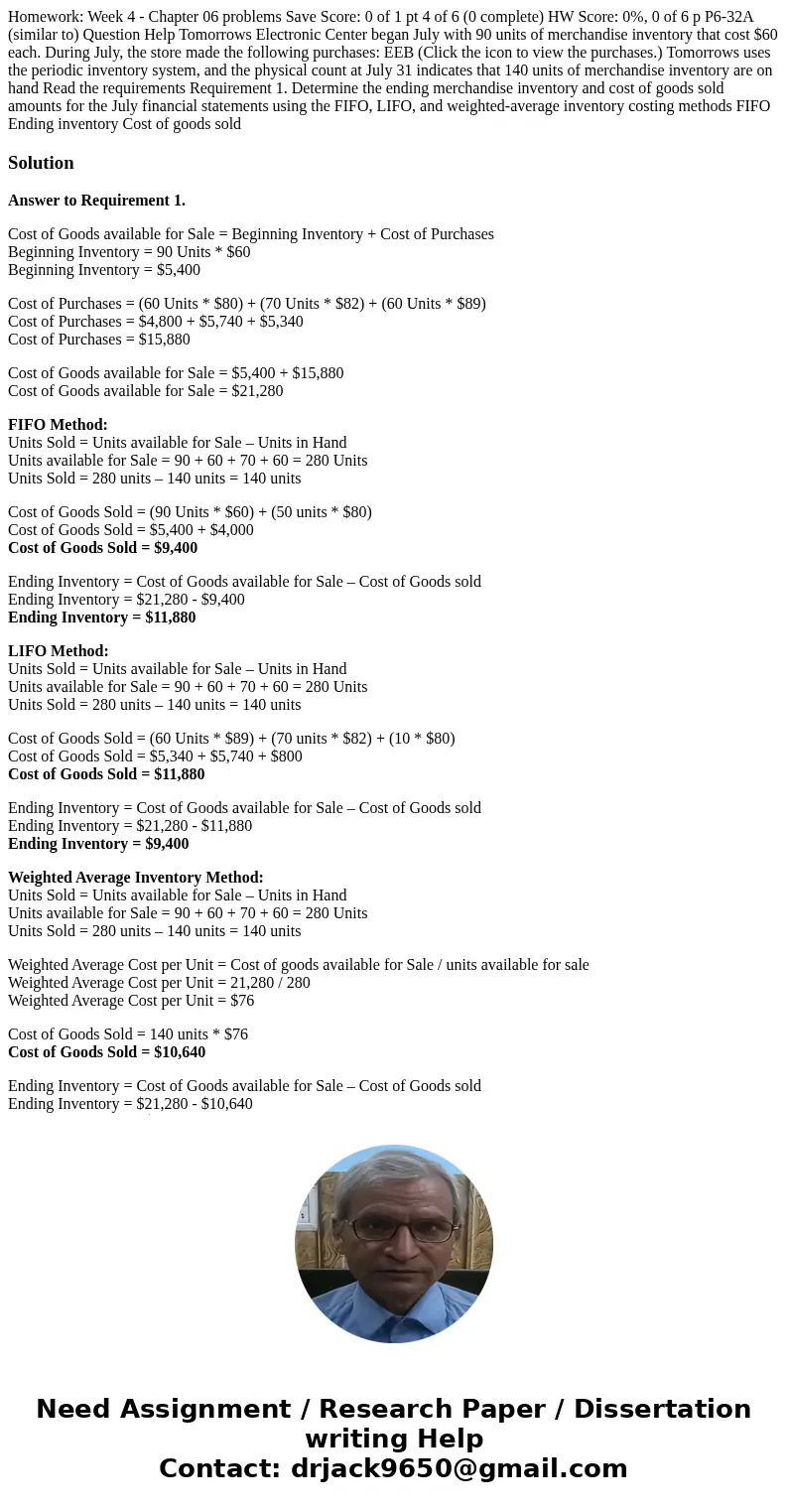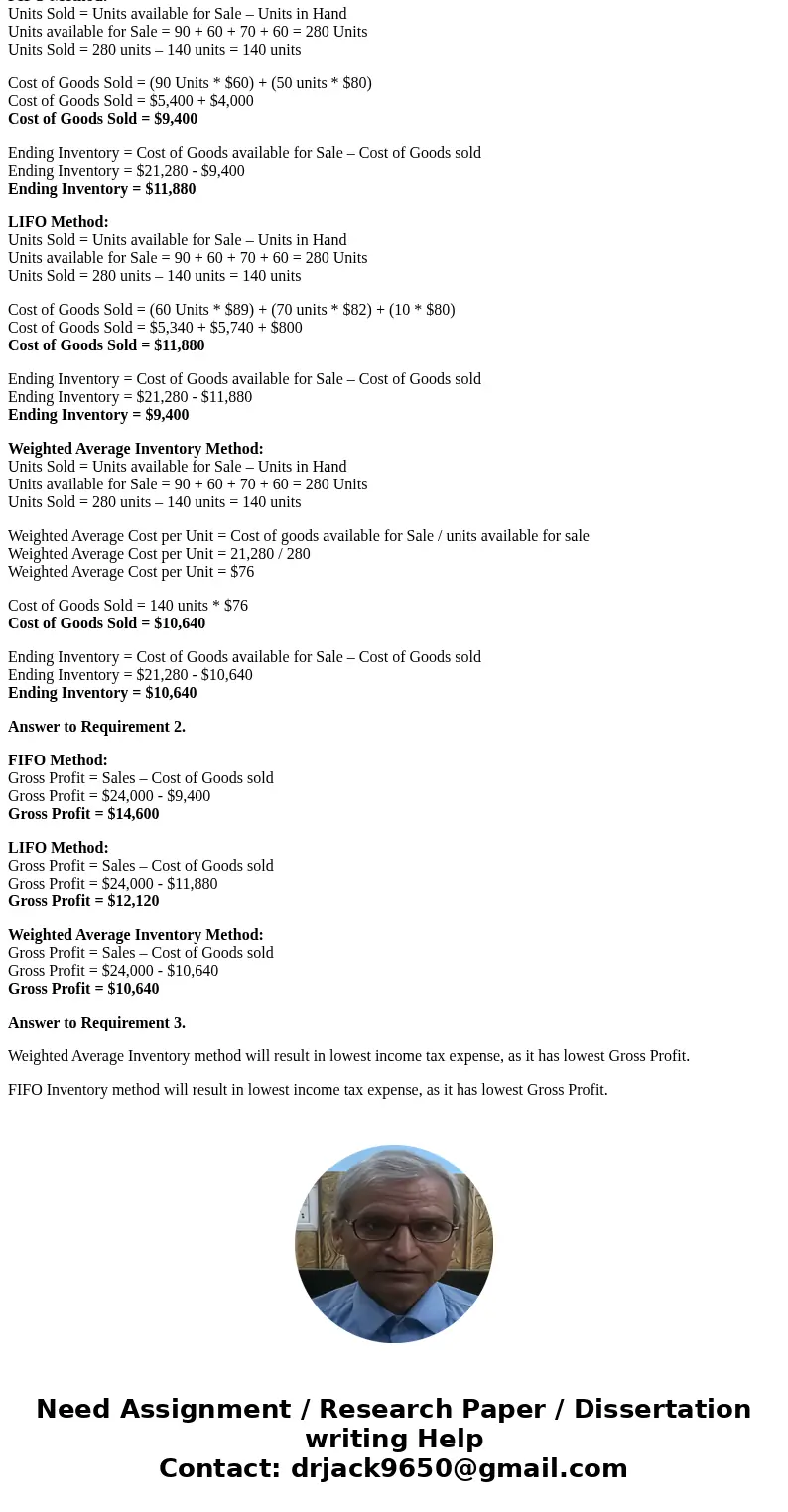Homework Week 4 Chapter 06 problems Save Score 0 of 1 pt 4
Solution
Answer to Requirement 1.
Cost of Goods available for Sale = Beginning Inventory + Cost of Purchases
Beginning Inventory = 90 Units * $60
Beginning Inventory = $5,400
Cost of Purchases = (60 Units * $80) + (70 Units * $82) + (60 Units * $89)
Cost of Purchases = $4,800 + $5,740 + $5,340
Cost of Purchases = $15,880
Cost of Goods available for Sale = $5,400 + $15,880
Cost of Goods available for Sale = $21,280
FIFO Method:
Units Sold = Units available for Sale – Units in Hand
Units available for Sale = 90 + 60 + 70 + 60 = 280 Units
Units Sold = 280 units – 140 units = 140 units
Cost of Goods Sold = (90 Units * $60) + (50 units * $80)
Cost of Goods Sold = $5,400 + $4,000
Cost of Goods Sold = $9,400
Ending Inventory = Cost of Goods available for Sale – Cost of Goods sold
Ending Inventory = $21,280 - $9,400
Ending Inventory = $11,880
LIFO Method:
Units Sold = Units available for Sale – Units in Hand
Units available for Sale = 90 + 60 + 70 + 60 = 280 Units
Units Sold = 280 units – 140 units = 140 units
Cost of Goods Sold = (60 Units * $89) + (70 units * $82) + (10 * $80)
Cost of Goods Sold = $5,340 + $5,740 + $800
Cost of Goods Sold = $11,880
Ending Inventory = Cost of Goods available for Sale – Cost of Goods sold
Ending Inventory = $21,280 - $11,880
Ending Inventory = $9,400
Weighted Average Inventory Method:
Units Sold = Units available for Sale – Units in Hand
Units available for Sale = 90 + 60 + 70 + 60 = 280 Units
Units Sold = 280 units – 140 units = 140 units
Weighted Average Cost per Unit = Cost of goods available for Sale / units available for sale
Weighted Average Cost per Unit = 21,280 / 280
Weighted Average Cost per Unit = $76
Cost of Goods Sold = 140 units * $76
Cost of Goods Sold = $10,640
Ending Inventory = Cost of Goods available for Sale – Cost of Goods sold
Ending Inventory = $21,280 - $10,640
Ending Inventory = $10,640
Answer to Requirement 2.
FIFO Method:
Gross Profit = Sales – Cost of Goods sold
Gross Profit = $24,000 - $9,400
Gross Profit = $14,600
LIFO Method:
Gross Profit = Sales – Cost of Goods sold
Gross Profit = $24,000 - $11,880
Gross Profit = $12,120
Weighted Average Inventory Method:
Gross Profit = Sales – Cost of Goods sold
Gross Profit = $24,000 - $10,640
Gross Profit = $10,640
Answer to Requirement 3.
Weighted Average Inventory method will result in lowest income tax expense, as it has lowest Gross Profit.
FIFO Inventory method will result in lowest income tax expense, as it has lowest Gross Profit.


 Homework Sourse
Homework Sourse